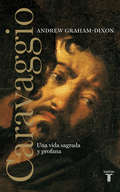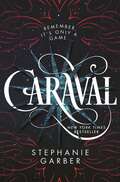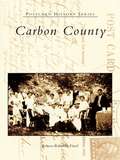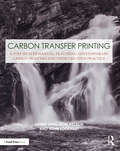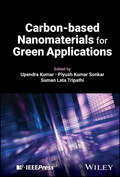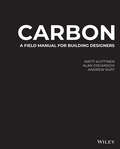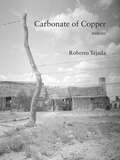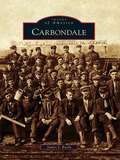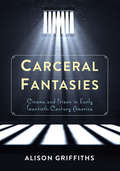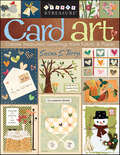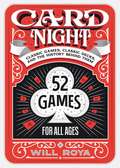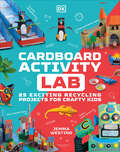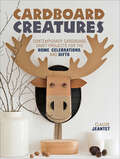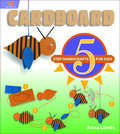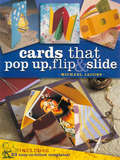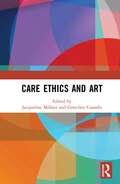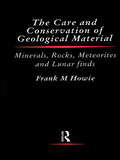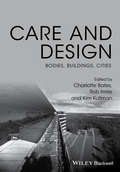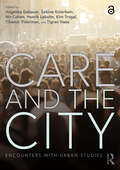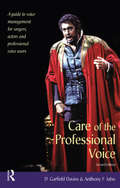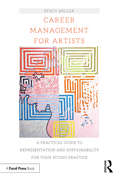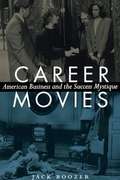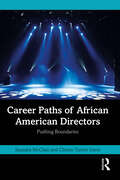- Table View
- List View
Caravaggio: Una vida sagrada y profana
by Andrew Graham-DixonEl claroscuro de un genio maldito. Michelangelo Merisi da Caravaggio vivió la más oscura y peligrosa vida de entre los grandes maestros de la pintura. Los ambientes de Milán, Roma y Nápoles en los que Caravaggio se movió, y que Andrew Graham-Dixon describe magníficamente en este libro, son los de los cardenales y las prostitutas, los de la oración y la violencia. En las calles que circundaban iglesias y palacios, las peleas y los duelos eran moneda común. En una de estas disputas, el impetuoso Caravaggio mató a otro hombre y tuvo que huir a Nápoles y luego a Malta, donde escapó de prisión tras verse envuelto en otro episodio violento. Él mismo fue víctima de un intento de asesinato en Nápoles tiempo después. Murió mientras regresaba a Roma en busca del perdón papal para sus crímenes. Tenía 38 años. Andrew Graham-Dixon ha pasado una década reuniendo las evidencias conservadas sobre la vida de Caravaggio para responder en este libro a muchas de las cuestiones que durante años han desconcertado a los investigadores. Revela las identidades de la gente corriente -a menudo prostitutas y mendigos- que el pintor usó como modelos para sus representaciones de escenas religiosas clásicas; describe lo que pasó realmente durante ese fatídico duelo; y ofrece el más convincente relato publicado hasta la fecha de las extraordinarias circunstancias de su muerte. Y en el centro de este relato se sitúa la reveladora interpretación que Graham-Dixon hace de los cuadros de Caravaggio para mostrar cómo éste creaba su drama, inmediatez y humanidad, y cómo rompió drásticamente con las convenciones de la época. La crítica ha dicho...«Ha habido otras biografías de Caravaggio, pero la de Andrew Graham-Dixon es la que hay que leer. Impresionantemente erudita y bien escrita, ésta es una extraordinaria historia de un hombre que nunca nos habla más que a través de su pintura.»Daily Mail «La vida de Caravaggio fue en cada detalle tan sangrienta, excitante y atractiva como sus propias pinturas. Entre informes policiales y exuberantes lienzos, Graham-Dixon ha moldeado una vida y la historia de una sociedad.»The Times «Raramente se ha podido contemplar a Caravaggio con tanta profundidad y relieve como en esta maravillosa biografía. El hombre y su obra emergen enriquecidos y revitalizados.»Neil MacGregor, director del British Museum «Tras años en los que los historiadores del arte se han concentrado en los detalles del estilo artístico, es refrescante leer una biografía de Caravaggio que combina la sangre y las vísceras de los callejones de Roma con una verdadera comprensión de la calidad y el carácter de su pintura.»Charles Saumarez Smith, director de la Royal Academy of Art «El que a Graham-Dixon le llevara una década investigar y escribir este lúcido y fascinante libro es una muestra de la profundidad de sus indagaciones, la destreza de su análisis histórico y artístico y la hábil fluidez con la que está expresado. Se trata de una proeza poco común.»Publishers Weekly
Caraval (Caraval #1)
by Stephanie Garber<P>Whatever you've heard about Caraval, it doesn't compare to the reality. It's more than just a game or a performance. It's the closest you'll ever find to magic in this world . . . <P>Welcome, welcome to Caraval—Stephanie Garber’s sweeping tale of two sisters who escape their ruthless father when they enter the dangerous intrigue of a legendary game. <P>Scarlett has never left the tiny island where she and her beloved sister, Tella, live with their powerful, and cruel, father. Now Scarlett’s father has arranged a marriage for her, and Scarlett thinks her dreams of seeing Caraval, the far-away, once-a-year performance where the audience participates in the show, are over. <P>But this year, Scarlett’s long-dreamt of invitation finally arrives. With the help of a mysterious sailor, Tella whisks Scarlett away to the show. Only, as soon as they arrive, Tella is kidnapped by Caraval’s mastermind organizer, Legend. It turns out that this season’s Caraval revolves around Tella, and whoever finds her first is the winner. <P>Scarlett has been told that everything that happens during Caraval is only an elaborate performance. But she nevertheless becomes enmeshed in a game of love, heartbreak, and magic with the other players in the game. And whether Caraval is real or not, she must find Tella before the five nights of the game are over, a dangerous domino effect of consequences is set off, and her sister disappears forever. <P><b>A New York Times Bestseller</b>
Carbon County
by Rebecca Rabenold-FinselNowhere in Pennsylvania is there a sychronicity between geography and history as there is in Carbon County. Intersected by the majestic Lehigh River in the picturesque Pocono Mountains, this is a county built on the discovery of anthracite coal, the fortitude of early settlers, and the boundless imaginations of men like Josiah White, Erskine Hazard, and Asa Packer. For over a century, Carbon County's breathtaking scenery, stunning Victorian architecture, and natural landmarks, such as Hitcheltooth Cliffs and Glen Onoko Falls, have attracted travelers. Whether riding on the hair-raising Switchback Railroad or staying at the American Hotel (now the Inn at Jim Thorpe), travelers loved postcards, many of which are featured in this book. Compiled from some of the finest collections of vintage postcards in the state, Carbon County is a visual treasure documenting the haunting beauty and idiosyncrasies of the area.
Carbon Transfer Printing: A Step-by-Step Manual, Featuring Contemporary Carbon Printers and Their Creative Practice (Contemporary Practices in Alternative Process Photography)
by Sandy King Don Nelson John LockhartCarbon Transfer Printing is a book about one of the earliest photographic processes that provided the first permanent printing methods, available in one form or another for over 150 years. This book reviews the extensive history of carbon transfer and related pigment processes in both monochrome and color, to serve as point source for a new carbon printer to begin to master the craft of carbon printing, as well as provide new material for experienced carbon printers so they can expand their techniques. The book includes never-before-published information on pre-sensitizing carbon tissue with newly identified compounds, information on the safe use and disposal of hexavalent chromium compounds, and simplified methods of producing 3-color carbon prints. Carbon Transfer Printing is divided into two parts, illustrated with 175 photographs. Part One is a complete how-to on the carbon transfer process, from simple to complex, with a troubleshooting guide and an extensive chapter on digital negatives. Part Two is devoted to contemporary carbon printers who share their methods and secrets to creating their beautiful carbon prints. Topics that the book covers are: Key events in carbon’s history How to organize the carbon workplace Sections on necessary supplies and equipment A step-by-step digital method of making high quality digital negatives Simple and advanced methods of carbon printing How to make carbon tissue, including several methods of pre-sensitizing How to choose UV light sources for printing in carbon Step-by-step processing directions How to prepare final support papers Troubleshooting carbon Multi-layer printing to add tone, or make a full color carbon print Finishing and final presentation of carbon prints A gallery of images and advice from contemporary carbon printers Carbon Transfer Printing is designed for both the beginning carbon enthusiast as well as for the advanced practitioner. Backed with extensive research on carbon printing from books, journals, and magazine articles from the 1800s to present day, and the extensive personal experience in carbon printing of the authors, there is enough information in this book to provide inspiration and proof of both the glorious past of carbon printmaking and its enduring importance to a new generation of image makers who value the handmade print.
Carbon-based Nanomaterials for Green Applications
by Upendra Kumar Suman Lata Tripathi Piyush Kumar SonkarGain valuable insight into applying carbon-based nanomaterials to the green technologies of the future The green revolution is the most important technological development of the new century. Carbon-based nanomaterials, with their organic origins and immense range of applications, are increasingly central to this revolution as it unfolds. There is an urgent need for an up-to-date overview of the latest research in this ever-expanding field. Carbon-Based Nanomaterials for Green Applications meets this need by providing a brief outline of the synthesis and characterization of different carbon-based nanomaterials, including their historical backgrounds. It proceeds to move through each major category, outlining properties and applications for each. The result is an essential contribution to a huge range of sustainable and renewable industries. With contributions from a global list of distinguished writers, the book includes: Discussion of nanomaterial applications in fields from drug delivery to biomedical technology to optics Analysis of nanomaterial categories including graphene, fullerene, mesoporous carbon, and many more Separate chapters describing aspects of supercapacitors, solar cells, and fuel cells Carbon-Based Nanomaterials for Green Applications is ideal for scientists and researchers working in nanotechnology, life sciences, biomedical research, bioengineering, and a range of related fields.
Carbon: A Field Manual for Building Designers
by Matti Kuittinen Alan Organschi Andrew RuffA comprehensive approach to design that integrates sustainable principles and design strategies for decarbonized construction Representing an international collaboration between academics and architects in the United States and Europe, Carbon: A Field Manual for Designers and Builders offers professionals in the field an approach to sustainable design that embraces building science principles, life-cycle analysis, and design strategies in carbon neutral construction. The book also contains background information on carbon in construction materials and in the building design process. This book is filled with illustrative diagrams and drawings that help evaluate the potential impact of design decisions for creating carbon emissions. Written by and for designers and builders, the book includes a compelling pair of case studies that explore carbon-reducing strategies, suggests steps for assessing a building's carbon footprint, and reviews carbon storages and circulation of materials. The guidelines detailed in the book can be adopted, replicated, and deployed to reduce carbon emissions and create more sustainable buildings. This important book: Offers an effective approach to sustainable design in construction Integrates building science principles, life-cycle analysis, and design strategies in carbon neutral construction Describes a methodology for quantifying the flow of carbon in the built environment Provides an analysis of carbon-reducing strategies based on a case study of a building designed by the authors Written for practicing professionals in architecture and construction, Carbon: A Field Guide for Designers and Builders is a must-have resource for professionals who are dedicated to creating sustainable projects.
Carbonate of Copper
by Roberto TejadaBringing together lyric poetry, documentary photographs, and lives lived along the U.S.-Mexico borderlandWritten during extended periods in Brownsville, McAllen, and Marfa, Texas, in Carbonate of Copper Roberto Tejada gives voice to unsettled stories from the past, as well as to present-day experiences of custody and displacement. The poems stage scenes adjacent to the U.S.-Mexico border and to the realities of migration warped by jarring political vitriol, bearing witness to past and present-day hazards and sorrows wagered by those in search of asylum. So enabled, these poems make visible not only the infrastructure of militarized surveillance and its detention complex but also the aspiration to justice and mercy and the resilient self-organized order of time for migrants seeking human dignity while awaiting passage to the other side of the dividing line.The book’s title refers also to a mineral found in azurite and malachite, a color medium that had an impact on art during the first phase of globalization, the ensuing colonial enterprise, and its systems of extraction. Carbonate of copper was less desirable than the deeper ultramarine made from ground lapis lazuli, but Renaissance artists and patrons nonetheless coveted it and prompted a market for the blue derivative used in tempera and oil pigment. The blue powder pigment serves, too, as a form of sorcery: one that would ward off those who deal in injury of the already dispossessed.Turning his attention to the forced relocation of peoples, the COVID-19 death toll, the encroaching dangers of illiberal rule, the meanings of home and eviction, the power of cultural memory, as well as his artistic forebears, Tejada accounts for the uncounted and those excluded from belonging in voices that tell the cruel fortunes and joyful vitality of human and non-human life forms.
Carbondale (Images of America)
by James J. RachtThe first nonnative settlers arrived in Ragged Island, as Carbondale was then known, around 1802. Twenty years later, brothers William and Maurice Wurts were exploring the wilderness when they took note of several outcroppings of "curious black stones." These stones turned out to be anthracite coal, and the two Philadelphia businessmen became pioneers in America's Industrial Revolution. Carbondale's journey has taken many twists and turns during the past two centuries. The colorful and fascinating mosaic of images in Carbondale gives the reader a glimpse into the heart of small-town America and a clear picture of this historic city's past.
Carceral Fantasies: Cinema and Prison in Early Twentieth-Century America (Film and Culture Series)
by Alison GriffithsA groundbreaking contribution to the study of nontheatrical film exhibition, Carceral Fantasies tells the little-known story of how cinema found a home in the U.S. penitentiary system and how the prison emerged as a setting and narrative trope in modern cinema. Focusing on films shown in prisons before 1935, Alison Griffiths explores the unique experience of viewing cinema while incarcerated and the complex cultural roots of cinematic renderings of prison life.Griffiths considers a diverse mix of cinematic genres, from early actualities and reenactments of notorious executions to reformist exposés of the 1920s. She connects an early fascination with cinematic images of punishment and execution, especially electrocutions, to the attractions of the nineteenth-century carnival electrical wonder show and Phantasmagoria (a ghost show using magic lantern projections and special effects). Griffiths draws upon convict writing, prison annual reports, and the popular press obsession with prison-house cinema to document the integration of film into existing reformist and educational activities and film's psychic extension of flights of fancy undertaken by inmates in their cells. Combining penal history with visual and film studies and theories surrounding media's sensual effects, Carceral Fantasies illuminates how filmic representations of the penal system enacted ideas about modernity, gender, the body, and the public, shaping both the social experience of cinema and the public's understanding of the modern prison.
Card Art: Create Treasured Greetings from Fabric & Paper
by Susan S. TerryThis adorable book features over fifty cards to make and share—including invitations, gender reveals, holiday greetings, and more!Combine papercraft with fabric to create one-of-a-kind cards! In this guide, Susan S. Terry offers fundamental techniques and twelve cards with full-size templates as starting off points. Once you learn the basics, you’ll gain the confidence to draw and cut your next cards freehand, putting into play your own personal style and inspiration. And just like that your creation turns out to be something better than you ever imagined. To keep or share, great cards are little works of art.Over fifty original card designs and a dozen gift tags.Great for scrappers, quilters, and anyone who loves to create keepsakes.Fuse fabric to paper to make “papric”—a striking foundation for your cards.Like little gifts, these cards will be treasured by your friends and family.
Card Night: Classic Games, Classic Decks, and The History Behind Them
by Will RoyaLearn when to hold 'em and when to fold 'em with Card Night, a collection of 52 classic card games, including rules and strategies. Featuring step-by-step, illustrated instructions, and two indexes that organize each game by difficulty and number of players needed, Card Night includes directions for playing all the most popular card games, including Hearts and Bridge, Rummy and Go Fish. In addition to providing the rules of standard game play, Card Night also details the fascinating stories and peculiarities behind some of the world's most famous card decks, some of which were used as currency, tools for propaganda, and even as a means for sending coded messages. Offering one game for each week of the year, Card Night is the go-to companion for weekly game nights, long car rides, and rainy days spent at home. Wow your friends and family with your game playing prowess and keep them entertained with fascinating details from playing card history.
Cardboard Activity Lab (DK Activity Lab)
by Jemma WestingDiscover plenty of creative crafts you can do using cardboard in this activity book bursting with exciting ideas!With 25 amazing projects to inspire young creators, this fun activity book encourages children to get creative by transforming everyday materials into incredible objects.Children aged 9-12 will love getting involved in exciting projects with Cardboard Activity Lab, which features great photography, succinct step-by-step instructions, and rigorous attention to detail. Young artists, architects, and builders can create fantastic games and toys, with a clear How it Works explanation for each project. From paint and glue to cardboard boxes and tubes, every project is made with affordable and easy-to-find materials.This fun DIY book for children features: - A bunch of ideas to encourage creativity in children and develop skills relating to engineering, art and design.- A number of hands-on activities using easy-to-source materials to reduce household waste.- Easy-to-follow instructions which helps kids to build new skills.- Fun craft projects that will encourage readers to think creatively, whether at home or school.Get crafty with cardboard and create something amazing using everyday materials that can be found around the home or easily sourced. This craft book is full of fun activities that parents and kids can enjoy making together. Using household items, construct an entire city complete with skyscrapers and transport systems, or a sci-fi robot costume for you and your friends!
Cardboard Creatures: Contemporary Cardboard Craft Projects for the Home, Celebrations, and Gifts
by Claude JeantetRepurpose your cardboard boxes to make ingenious and amusing animal objects and furniture—from a moose head wall trophy to a hedgehog pencil pot. Cardboard has never been so much fun—just look what you can make with it! So before you bin that box, take a look at the clever ideas in this exciting new book of cardboard animal projects. Light yet durable, cardboard is ideal to create on-trend animal-themed ornaments and decorative furniture that will delight both children and adults alike. Projects include mouse and tortoise storage boxes, a wolf pencil case, an elephant plant pot, even a Noah&’s Ark clock, an owl lampshade, a zoo chess set, cat storage drawers, a penguin side table, a lion doll&’s bed and more! All of the cardboard craft techniques are explained, with easy-to-follow step-by-step instructions and templates.
Cardboard: 5-Step Handicrafts for Kids
by Anna LlimósIn just five simple steps, children can make a variety of whimsical objects such as a snake, a watch, and gift tags out of cardboard. Fourteen projects make clever use of commonly available materials and simple tools, turning egg cartons, paper towel rolls, and card stock into lasting crafts and toys. Children five years and older will develop fine motor skills, feed their creativity, and be encouraged to find new uses for everyday objects.
Cardiovascular Computing—Methodologies and Clinical Applications (Series in BioEngineering)
by Spyretta Golemati Konstantina S. NikitaThis book provides a comprehensive guide to the state-of-the-art in cardiovascular computing and highlights novel directions and challenges in this constantly evolving multidisciplinary field. The topics covered span a wide range of methods and clinical applications of cardiovascular computing, including advanced technologies for the acquisition and analysis of signals and images, cardiovascular informatics, and mathematical and computational modeling.
Cards that Pop Up, Flip & Slide
by Michael JacobsDynamic new ideas for your handmade cardsDazzle your friends and loved ones with the one-of-a-kind projects in Cards that Pop Up, Flip & Slide. A few simple cuts and folds are all it takes to create over twenty cards and envelopes with moveable parts. From pop-up trees to flipping leaves and sliding message panels, the mechanism that make these cards spectacular are easy to re-create or adapt to whatever suits your fancy!Everything you need to get started is inside, including clear instruction, easy-to-follow patterns and introductory information on tools, materials and techniques. And every card featured is designed to fit inside a standard A-2 or #10 envelope, so mailing is as easy as sealing, stamping and addressing. Tips, tricks and ideas for personalization help you create unique cards that their recipients will remember for a long time to come.
Care Aesthetics: For artful care and careful art
by James ThompsonWhat if the work of a nurse, physio, or homecare worker was designated an art, so that the qualities of the experiences they create became understood as aesthetic qualities? What if the interactions created by artists, directors, dancers, or workshop facilitators were understood as works of care? Care Aesthetics is the first full-length book to explore these questions and examine the work of carer artists and artist carers to make the case for the importance of valuing and supporting aesthetically caring relations across multiple aspects of our lives. Theoretically and practically, the book outlines the implications of care aesthetics for the socially engaged arts field and health and social care, and for acts of aesthetic care in the everyday. Part 1 of the book outlines the approaches to aesthetics and to care theory that are necessary to make and defend the concept of care aesthetics. Part 2 then tests this through practice, examining socially engaged arts and health and social care through its lens. It makes the case for careful art exploring the implications of care aesthetics for participatory or applied arts. Then it argues for artful care and how an aesthetic orientation to care practices might challenge some of the inadequacies of contemporary care. This is a vital, paradigm-shifting book for anyone engaged with socially engaged arts or social and health care practices on an academic or professional level.
Care Ethics and Art
by Jacqueline MillnerWhat would it mean to substitute care for economics as the central concern of politics? This anthology invites analysis, reflections and speculations on how contemporary artists and creative practitioners engage with, interpret, and enact care in practices which might forge an alternative ethics in the age of neoliberalism. Interdisciplinary and innovative, it brings together contributions from artists, researchers and practitioners who creatively consider how care can be practised in a range of contexts, including environmental ethics, progressive pedagogies, cultures of work, alternative economic models, death literacy advocacy, parenting and mothering, deep listening, mental health, disability and craftivism. Care Ethics and Art contributes new modes of understanding these fields, together with practical solutions and models of practice, while also offering new ways to think about recent contemporary art and its social function. The book will benefit scholars and postgraduate research students in the fields of art, art history and theory, visual cultures, philosophy and gender studies, as well as creative and arts practitioners.
Care and Conservation of Geological Material (Conservation And Museology Ser.)
by Frank HowieThis is the first book to specifically address the preservation of an increasingly important group of materials. Techniques for processing minerals and rocks in the field and laboratory are outlined as well as the effects of treatments on specimens. Readership: Professional museum staff, curators and conservators, scientists and technicians; Students of mineralogy, private collectors.
Care and Design: Bodies, Buildings, Cities
by Rob Imrie Kim Kullman Charlotte BatesCare and Design: Bodies, Buildings, Cities connects the study of design with care, and explores how concepts of care may have relevance for the ways in which urban environments are designed. It explores how practices and spaces of care are sustained specifically in urban settings, thereby throwing light on an important arena of care that current work has rarely discussed in detail.
Care and the City: Encounters with Urban Studies
by Angelika Gabauer, Sabine Knierbein, Nir Cohen, Henrik Lebuhn, Kim Trogal, Tihomir Viderman, and Tigran HaasCare and the City is a cross-disciplinary collection of chapters examining urban social spaces, in which caring and uncaring practices intersect and shape people’s everyday lives. While asking how care and uncare are embedded in the urban condition, the book focuses on inequalities in caring relations and the ways they are acknowledged, reproduced, and overcome in various spaces, discourses, and practices. This book provides a pathway for urban scholars to start engaging with approaches to conceptualize care in the city through a critical-reflexive analysis of processes of urbanization. It pursues a systematic integration of empirical, methodological, theoretical, and ethical approaches to care in urban studies, while overcoming a crisis-centered reading of care and the related ambivalences in care debates, practices, and spaces. These strands are elaborated via a conceptual framework of care and situated within broader theoretical debates on cities, urbanization, and urban development with detailed case studies from Europe, the Americas, and Asia. By establishing links to various fields of knowledge, this book seeks to systematically introduce debates on care to the interconnecting fields of urban studies, planning theory, and related disciplines for the first time.
Care of the Professional Voice: A Guide to Voice Management for Singers, Actors and Professional Voice Users
by D Garfield Davies Anthony F JahnSinger and actors are a unique group of performers, relying almost entirely on their voice for the professional livelihood. Jet lag, amplification, allergens, stress, pollution, and vocal strain all affect vocal performance. Written for the performer, the teacher, and the vocal coach, Care of the Professional Voice offers clear explanations and medical advice on vocal problems and vocal health. Care of the Professional Voice is written by experts in laryngology in the United States and Great Britain. This second edition includes a singer's guide to self-diagnosis.
Career Management for Artists: A Practical Guide to Representation and Sustainability for Your Studio Practice
by Stacy MillerBoth pragmatic and motivational, this book addresses what it means to have a successful long-term career in the arts, taking stock of the current landscape of the art world, introducing new venues in the field, reflecting on issues of social media and exhibition, and ultimately encouraging artists to take control of their professional lives. Weaving conversations from a range of internationally based artists who have negotiated alternative paths to success, lauded artist and teacher Stacy Miller provides a practical, lively reflection on what it takes to be an artist in our new global landscape. This book covers practical needs, different approaches, and philosophical ways of creating a life and career in the arts. It lays out conventional and nonconventional means to representation, describes being an entrepreneur versus funding independent creative projects, and examines social media for the potential powerhouse it is. Most importantly, it gives artists a way to think about being a professional and the different paths to a successful career in the arts. Perfect for emerging, mid-career, and experienced artists, this book encourages readers to redefine personal success and to act locally, nationally, and internationally in an expanding art world.
Career Movies: American Business and the Success Mystique
by Jack BoozerAnalyzing numerous well-known films from the entire period, he defines the genre as one in which a protagonist strives for career success that often proves to be either elusive despite hard work, or unfulfilling despite material rewards and status. Boozer also explores several distinct subgenres of the career movie—the corporate executive films of the 1950s; the career struggles of (single, married, and/or parenting) women; the entrepreneurial film as it is also embodied in texts about immigrants and racial and ethnic minorities and business-oriented femmes fatales; the explosion of promotionalism and the corporatization of employment; and, finally, the blurring of work and private life in the brave new world of the televirtuality film.
Career Paths of African American Directors: Pushing Boundaries
by Saundra McClain Clinton Turner DavisCareer Paths of African American Directors is a collection of in-depth conversations with African American directors.These conversations provide an insightful overview of the interviewees’ work and artistic vision and explore their personal influences, aesthetic philosophies, directorial styles, and some of the creative successes they achieved while navigating the obstacles, challenges, and biases encountered while establishing their careers in American theatre. The directors are presented with similar core questions as well as pertinent questions related to their own aesthetics, philosophy, and career. Often, these selected directors’ productions are grounded in a non-European aesthetic and philosophy, and their directorial styles are refracted through the prisms of ethnicity, gender, race, and culture, thus bringing a fresh approach to their work and the art of directing.Career Paths of African American Directors will be of interest to actors, early career and established directors, and students of Acting, Directing, and Theatre Studies.
